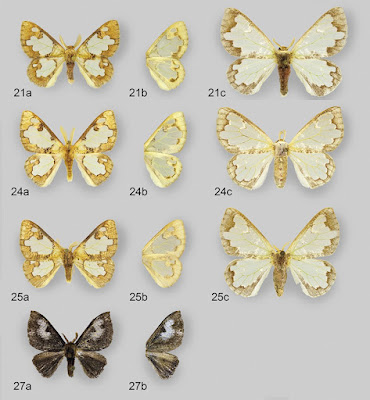Abstract
The first obligatory troglobitic Claea species, Claea scet, is described from a subterranean river in a cave connected to the Yangtze River in Hulu Town, Shawan District, Leshan City, Sichuan Province, southern China. C. scet differs from all congeners by the following combination of characters: Body pale without pigmentation; eye vestigial, diameter of eye 3.8–5.9% SL; short anal fin, anal fin height 7.0–8.4% SL. Molecular phylogenetic analysis supported the validity of the new species and revealed a close relationship between Claea and hypogean Triplophysa species.
Key Words: Cavefish, Claea, morphology, Nemacheilidae, phylogeny
 |
| Claea scet sp. nov. in life, paratype IHB 202305300009. Photo from Jiajun Zhou. |
 |
| Morphological characters of holotype, IHB 202305300005 of Claea scet sp. nov. in preservative (10% formalin). A. Lateral view; B. Dorsal view; C. Ventral view |
Family Nemacheilidae Regen, 1911
Genus Claea Sauvage, 1874
Claea scet sp. nov.
Diagnosis. C. scet resembles all known species of Claea in possessing a processus dentiformis at the medium of the upper jaw, absence of tubercle-bearing, elevated skin on the sides of the head and a thickened tuberculated pad on the dorsal surface of the thickened and widened rays of the pectoral fin in males, absence of adipose crest between dorsal fin and caudal fin base, body scaleless, and absence of supra-pelvic flap, all of which are diagnostic features of Claea. C. scet can be distinguished from C. dabryi, C. minibarba and C. wulongensis by the combination of the following characters (see Table 2): Processus dentiformis reduced, not covering lower jaw when mouth shut; eye vestigial, diameter of eye 3.8–5.9% SL; short anal fin, anal fin height 7.0–8.4% ...
Etymology. The specific name “scet” is in reference to the abbreviation of Sichuan Cave Exploration Team, a cave exploration team who collected the type specimens, in recognition of their contributions to the understanding of cave fishes of Sichuan Province. “川洞山鳅 (Pinyin: Chuan Dong Shan Qiu)” is proposed for the Chinese common name of this new species.
Hao-Tian Lei, Li He, Jun-Hao Huang, Jia-Jun Zhou and De-Kui He. 2025. Description of A New Cave-dwelling Species of Claea (Teleostei, Cypriniformes, Nemacheilidae) from the Yangtze River Basin in Sichuan, southern China. Zoosystematics and Evolution. 101(2): 681-695. DOI: doi.org/10.3897/zse.101.146469














































